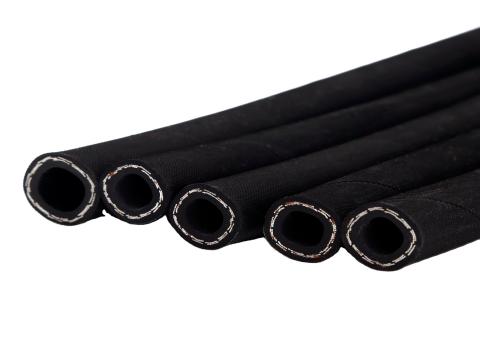Selecting petrochemical hoses can be a complex task because they must meet the unique demands of each application. To ensure that the correct hose is selected, it is important to consider the requirements of the application, the type of fluid being transported, and the operating conditions.
- Determining the application requirements
The first step in selecting a petrochemical hose is to determine the application requirements. These requirements should cover the following:
- Purpose of the hose: The type of application and purpose of the hose determine the material and construction of the hose. For example, a hose used for transporting liquids should have a greater wall thickness than a hose used for vacuum applications to prevent collapse.
- Working pressure: The working pressure of the hose system should be considered to ensure that the hose can withstand the pressure without bursting or leaking.
- Working temperature: The temperature range of the fluid being transported should be taken into account to ensure that the hose can withstand the temperature without deforming or softening.
- Chemical resistance: The type and properties of the fluid being transported should be considered to ensure that the hose is suitable for the chemical being transported. This is particularly important for corrosive or acidic fluids.
- Environmental conditions: The environmental conditions in which the hose will be used should also be taken into account. For example, exposure to UV radiation or ozone can cause degradation of the hose material.
- Considering the transport medium and operating conditions
In addition to considering the application requirements, it is important to consider the transport medium and operating conditions when selecting a petrochemical hose. The transport medium should be considered because it determines the type of hose that can be used. For example, gases such as air and nitrogen require a different type of hose than liquids such as water or chemicals.
The operating conditions, which include temperature, pressure, and environmental conditions, also play an important role in hose selection. Temperature is particularly important because it affects the physical properties of the hose material and the chemical properties of the fluid being transported. Pressure affects the wall thickness of the hose and can also cause damage if the hose is over pressurized. Environmental conditions such as UV radiation and ozone can cause degradation of the hose material, while moisture can lead to corrosion.
- Evaluating the hose material and manufacturers
Once the application requirements, transport medium, and operating conditions have been considered, the next step is to evaluate the hose material and manufacturers. The hose material should be chosen based on the application requirements, as different materials have different properties such as temperature resistance, chemical resistance, and wall thickness. Materials such as rubber, plastic, and fiberglass are commonly used for petrochemical hoses.
When selecting a manufacturer, it is important to consider their reputation, experience, and capabilities. It is advisable to choose a manufacturer that has a good reputation and has expertise in petrochemical hoses. This will ensure that the hoses are of high quality and suitable for the application. It is also important to check that the manufacturer can provide the necessary certifications and that their production process complies with relevant standards.
Conclusion
Selecting petrochemical hoses can be a complex task, but by considering the application requirements, transport medium, and operating conditions, it can be made easier. Once these factors have been considered, evaluating the hose material and manufacturers can help ensure that the correct hose is selected for the application. When choosing petrochemical hoses, selecting the wrong material or manufacturing standard can lead to costly repairs or total replacement of components within short time frames. Therefore, it is essential to conduct comprehensive res

